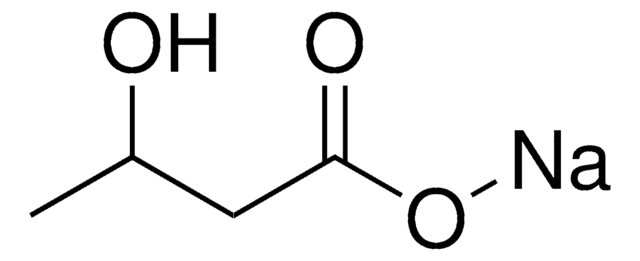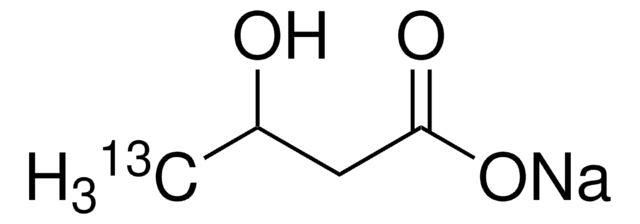MAK199
Acetoacetate Colorimetric Assay Kit
Sufficient for 100 Colorimetric tests
Synonym(s):
AcAc Assay Kit
Sign Into View Organizational & Contract Pricing
All Photos(2)
About This Item
UNSPSC Code:
12161503
NACRES:
NA.84
Recommended Products
detection method
colorimetric
relevant disease(s)
endocrinological disorders, diabetes; cancer
storage temp.
−20°C
General description
Acetoacetate (AcAc) is a β-ketoacid formed in the mitochondria by the condensation of two molecules of acetyl-CoA. AcAc is either enzymatically reduced to 3-hydroxybutyrate or decarboxylated to produce acetone. Ketone bodies (AcAc, 3-HB, and acetone) are used as alternate source of energy in the absence of glucose. Excess ketone bodies are observed in type I diabetes, alcoholism, or starvation.
Suitability
Suitable for the detection of acetoacetate in samples such as serum, plasma, blood, urine, and other body fluids.
Principle
The Acetoacetate Colorimetric Assay kit provides a simple and sensitive procedure for measuring AcAc in various samples (ranging from 20-100 nmole/well). AcAc concentration is determined by generating a colorimetric (550 nm) product proportional to the amount of AcAc present. The kit does not detect 3-hydroxybutyrate and is specific for acetoacetate.
Kit Components Only
Product No.
Description
- Acetoacetate Assay Buffer
- Acetoacetate Standard
- Acetoacetate Substrate
replaced by
Product No.
Description
Pricing
Signal Word
Warning
Hazard Statements
Precautionary Statements
Hazard Classifications
Acute Tox. 4 Oral
Storage Class Code
10 - Combustible liquids
Choose from one of the most recent versions:
Certificates of Analysis (COA)
Lot/Batch Number
Don't see the Right Version?
If you require a particular version, you can look up a specific certificate by the Lot or Batch number.
Already Own This Product?
Find documentation for the products that you have recently purchased in the Document Library.
Customers Also Viewed
Daniela Liśkiewicz et al.
Frontiers in cellular neuroscience, 15, 733607-733607 (2021-08-31)
Experimental and clinical data support the neuroprotective properties of the ketogenic diet and ketone bodies, but there is still a lot to discover to comprehensively understand the underlying mechanisms. Autophagy is a key mechanism for maintaining cell homeostasis, and therefore
Anna Go et al.
Sensors (Basel, Switzerland), 21(14) (2021-07-25)
In this report, we present an enzyme deposited Au electrode for an electrochemical measurement of acetylacetic acid (AcAc) in urine. The electrode has an immobilized layer of a mixture of D-β-hydroxybutyrate dehydrogenase (HBDH) and nicotinamide adenine dinucleotide (NADH) as sensing
Enrique Chávez et al.
The Journal of pharmacology and experimental therapeutics, 361(2), 292-302 (2017-02-18)
Background: Mitochondrion is an important metabolic and energetic organelle that regulates several cellular processes. Mitochondrial dysfunction has been related to liver diseases including hepatocellular carcinoma. As a result, the energetic demand is not properly supplied and mitochondrial morphologic changes have
Our team of scientists has experience in all areas of research including Life Science, Material Science, Chemical Synthesis, Chromatography, Analytical and many others.
Contact Technical Service




